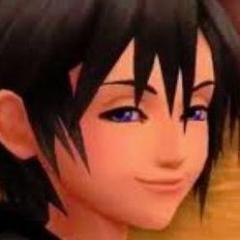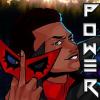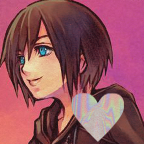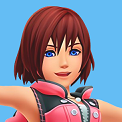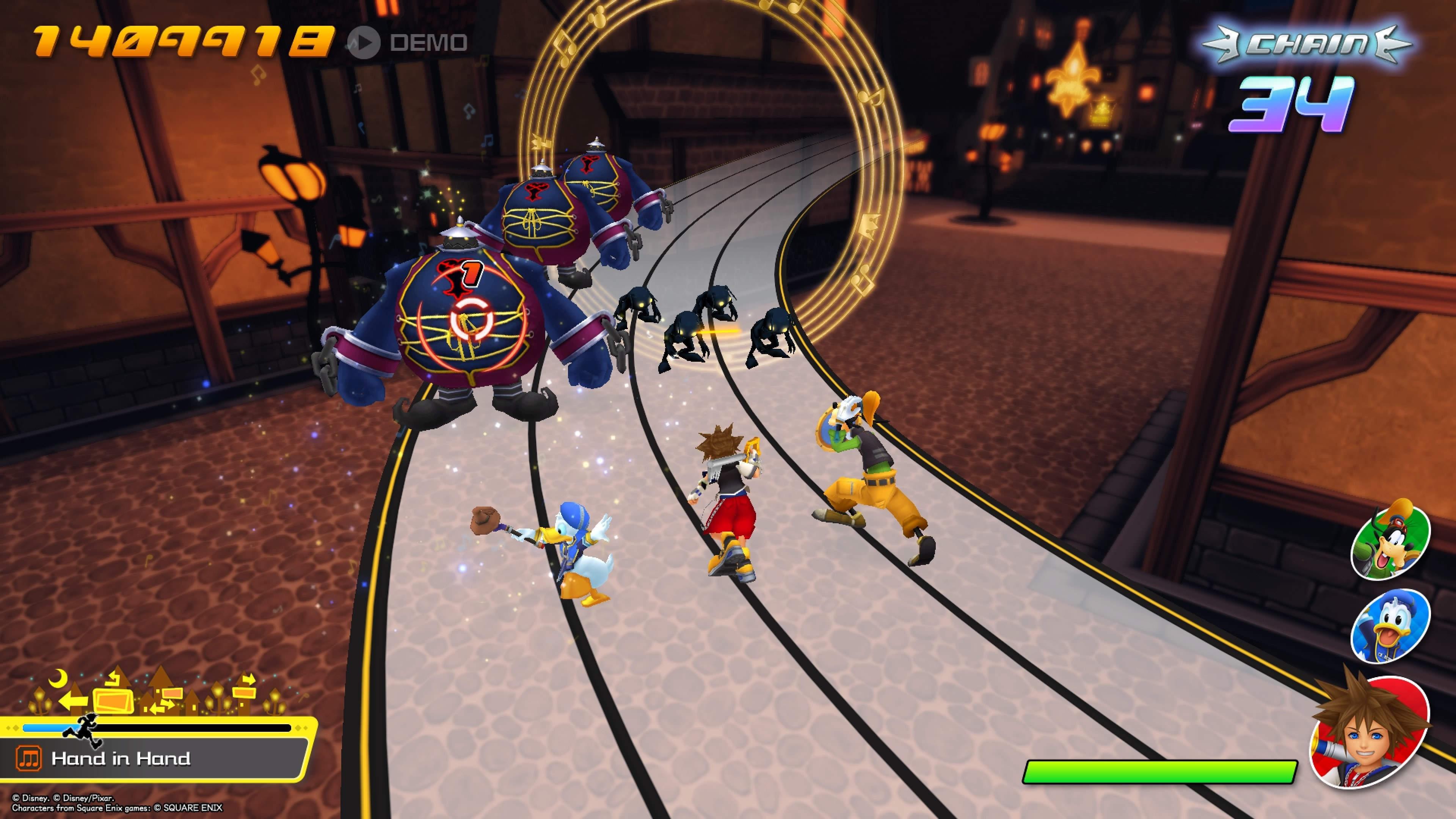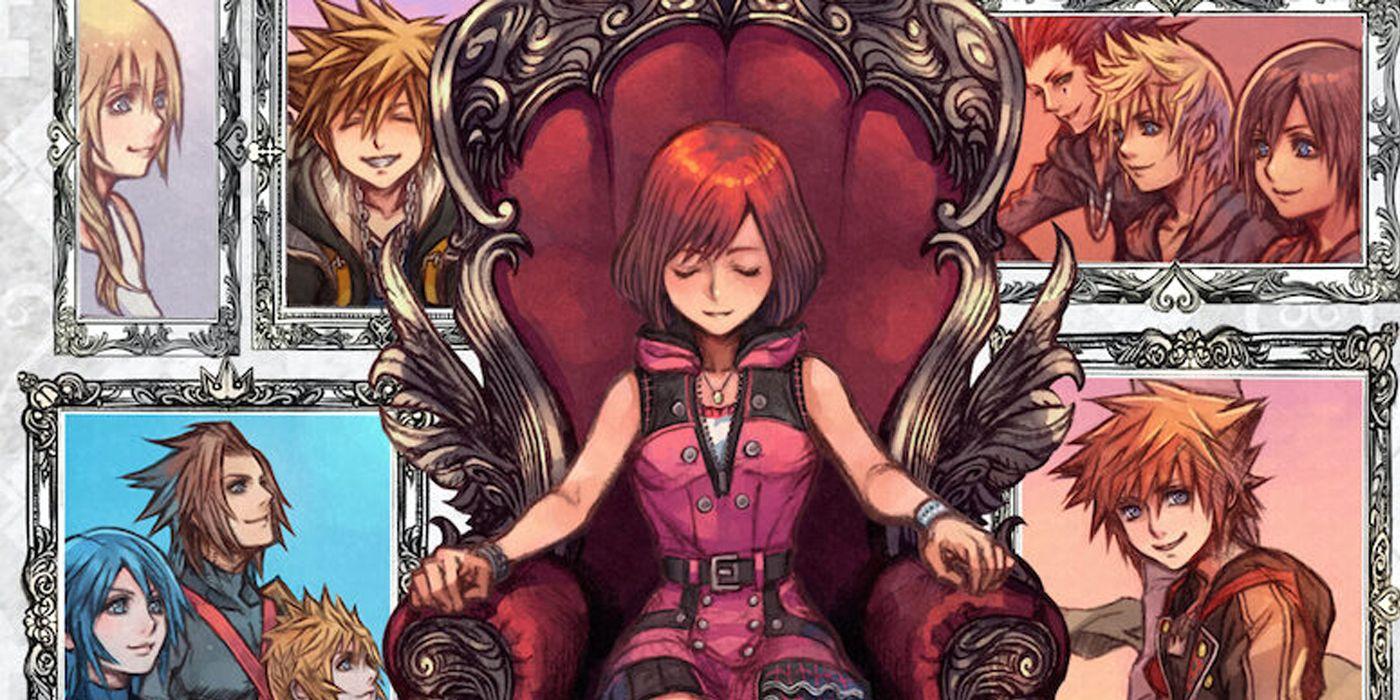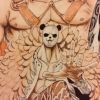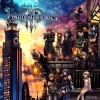Search the Community
Showing results for tags 'mom'.
Found 11 results
-
Post your theories below about who you think it the traitor and why, and I will edit this post to include them. Theories that I've thought of: There is no traitor, it was all just a set-up by the Master of Masters. The Master of Masters is the traitor, because he set them all up (this one is sort of just another way to interpret the first theory). They're all the traitor, because they all turned against each other at some point (just another way to interpret the first theory). Luxu is the traitor, because the Lost Page talks about an inevitable betrayal by "the one who bears the sigil" and Luxu is the only one with an "x" in his name (presumably. The Master of Masters' name might be "X Super", so he could be a candidate for the traitor as well.) Saix/Isa is the traitor. Who ever said the Book of Prophecies was talking about an inevitable betrayal in the age of fairy tales? Maybe it was talking about a betrayal in the future (present-day)? All of the Seekers of Darkness "bear the sigil", but the person I can most likely see betraying Xehanort is Saix/Isa. Aced is the traitor. "The one who bears the sigil" could be a bear pun, because Aced has a bear mask. This one seems silly, but the Master of Masters is very silly sometimes, so who knows. The Player is the traitor, because we are told by the Master of Masters that if there's a Nightmare Chirithy, it belongs to the traitor. The only person we know to have a Nightmare Chirithy is the Player. (It could've just been a part of the Master of Masters manipulating them and setting them up though of course).
- 11 replies
-
- traitor
- master of masters
- (and 17 more)
-
What do you want revealed in Dark Road's ending?
- 4 replies
-
- kingdom hearts dark road
- dark road ending
- (and 4 more)
-
Masanobu Suzui, the co-director of Kingdom Hearts Melody of Memory, sat down with Square Enix and decided to "dig a little deeper" into one of the tracks that he worked on-- the song "Hand In Hand", a reoccurring battle soundtrack for the game series. The first step in the process was choosing the track to begin with! The second step that Suzui talks about is cutting the song down-- some tracks of the game are quite long, and they had to figure out what part of the song they wanted to use for the gameplay. Suzui then explains how a document is then made, which concerns how they want the stage to look while it's being played. This includes what they want to show from Traverse Town, such as Cid's shop, the hotel, the item shop, and the Lady and the Tramp fountain. Afterwards, the enemies are chosen. When everything has been picked and chosen, a single team member is asked to create the note sequence. Suzui explains that the team member had to listen to "Hand In Hand" a numerous amount of times to create what Suzui calls an "overarching concept for the stage - normal at the beginning, followed by some difficulty spikes around the middle and end of the track.". After that, Suzui explains that it's then time to revise and edits to the soundtrack and the stage itself. It doesn't stop there by just revising and then sending the stage off to production. They must test the stage over and over again to make sure that it's perfect for playability. Suzui concludes the blog by saying: You can check out the full article on the Square Enix Blog. What are your thoughts on these details? Did you find anything fascinating or surprising? Let us know in the comments below! View full article
-
I'm quite late, but I just finished MoM. While I appreciate the recap and enjoyed the minigames, I can't say I wasn't a tad bit disappointed. This game was very much hyped to be a Kairi game (box art, the narrator, etc.) but she wasn't even in any parties. She does one fight -- where she's transformed into Sora so you don't even get to actually be her.I did a slight rewrite (if you can even call it that? less of a rewrite more of a what if MoM was a full fledged side game). Kairi, feeling responsible for Sora's fate & driven by her love for him, sets out on a journey to - hopefully - bring him home. She travels various Disney world’s searching for clues to Sora’s whereabouts, growing in strength & skill along the way, eventually unlocking her deep, hidden memories. There would be 11 worlds and it mainly keeps the actual ending of Melody of Memory, except Kairi and Riku both go in the portal.It's here if you'd like to read it! Hope you enjoy it and I'd appreciate feedback.https://drive.google.com/file/d/1H93uiCBS4uMz1z_D3AqOH5nNImfUZSd7/view?usp=sharing
-
Masanobu Suzui, the co-director of Kingdom Hearts Melody of Memory, sat down with Square Enix and decided to "dig a little deeper" into one of the tracks that he worked on-- the song "Hand In Hand", a reoccurring battle soundtrack for the game series. The first step in the process was choosing the track to begin with! The second step that Suzui talks about is cutting the song down-- some tracks of the game are quite long, and they had to figure out what part of the song they wanted to use for the gameplay. Suzui then explains how a document is then made, which concerns how they want the stage to look while it's being played. This includes what they want to show from Traverse Town, such as Cid's shop, the hotel, the item shop, and the Lady and the Tramp fountain. Afterwards, the enemies are chosen. When everything has been picked and chosen, a single team member is asked to create the note sequence. Suzui explains that the team member had to listen to "Hand In Hand" a numerous amount of times to create what Suzui calls an "overarching concept for the stage - normal at the beginning, followed by some difficulty spikes around the middle and end of the track.". After that, Suzui explains that it's then time to revise and edits to the soundtrack and the stage itself. It doesn't stop there by just revising and then sending the stage off to production. They must test the stage over and over again to make sure that it's perfect for playability. Suzui concludes the blog by saying: You can check out the full article on the Square Enix Blog. What are your thoughts on these details? Did you find anything fascinating or surprising? Let us know in the comments below!
-
Kingdom Hearts X (Chi) and SALIGIA: the Key to an Allegory By Jesus C. Deytiquez Disclaimer: The following (except those validated or founded facts in the Kingdom Hearts series) are my own speculations based with research and knowledge. And sorry for the grammatical errors if there is/are. Reincarnation Theory I know that there is a theory spreading among the fans of Kingdom Hearts like me that proposes the idea that the foretellers and their master, the Master of Masters, will die and then be reincarnated into the several characters that we are very familiar with (e.g. Sora being the reincarnation of Gula). I really cannot say that I am one hundred percent certain with the accuracy of what I will be going to show in this article, but, maybe, just maybe, my speculations will help my fellow fans to reconsider or rethink the aforementioned theory. My Story I am a writer and I like reading and writing allegories, or stories that hide deeper meanings in them through symbolism or imagery, with the goal (although somewhat paradoxical) that by masking such meanings, the meanings will be understood by the reader in a way that a normal presentation cannot do. I like the allegories of C.S. Lewis, Dante Alighieri, John Bunyan, and other Christian writers; they all utilize their character’s name and personality to present several ideas to their reader. One common thing also about them is that they always introduce to their readers the seven deadly sins, namely, pride, avarice, lust, envy, gluttony, wrath, and sloth by creating characters of their own, based on the sins with related names and suitable personalities—the seven antagonists in the anime Full Metal Alchemist will be the contemporary example of this allegorical style. And these characters representing the seven deadly sins will be the characters that the protagonist will need to encounter and overcome during his or her journey. And I, moved by the beauty of their stories and that particular style, tried to write my own. My Research, Discovery, the Seven Deadly Sins, and the Master of Masters’ Name During my attempt to create my own allegory, of course, I also done some further research to aid me in my endeavor. Ex nihilo nihil fit. From nothing comes nothing. I need to receive first before I can give. Then I discovered along the way that the seven deadly sins, when translated to Latin, will have these names: Superbia, Avaritia, Luxuria, Invidia, Gula, Ira, and Acedia (SALIGIA). By the time I discovered this, mysteriously, I also discovered that there is an android game of my all-time-favorite game, Kingdom Hearts, which is Kingdom Hearts X (Chi) or which now called as Kingdom Hearts Union Cross. (This happened way back late 2016.) I hastily installed the app, and you can imagine my surprise when I learned the name of the foretellers who were the leaders of the five unions. The five foretellers possess names from the seven deadly sins! Master Ava is avaritia. Master Invi is invidia. Master Aced is acedia, and so forth. In other words, the Master of Master’s name, which is still unrevealed last time I checked, is almost sure to be Superbia or some shortened version of that Latin word for pride. I know that it is really fitting for the Master of Masters’ name to be a name for pride because, according to the Christian faith from which the concept of the seven deadly sins originated, pride is the father or master of all remaining deadly sins. Furthermore, all other sins still have some love for others in them or they really on other persons to exist (e.g. you can get mad or be wrathful to a person because you still have, no matter how imperfect or perverted, some care or love for that person, you can envy a person because you perceive him to be better than you etc.). But pride only focuses on itself. Remember the keyblades of the foretellers. All have hearts in them except for the keyblade of the Master of Masters. In support of this, remember how the Master of Masters seemed to be apathetic to what is to befall. But, you might, of course, object that that particular keyblade will be passed on later to Luxu and then to Xehanort. Yes, it was passed on later to several persons, but such objection can be answered easily through analysis of the personalities of the successors and the sins themselves. Lust can easily become more like its father when it is, ultimately, already about satisfying the pleasure of the self alone. And, remember also how Xehanort used Terra and his friends for his own “selfish” reason. The Seven Lights or Virtues Now we will return to the reincarnation theory. I think that if there are seven deadly sins or vices, then there will be also seven virtues that the Christian faith also enumerated, namely, Humility or Humilitas, Charity or Caritas, Chastity or Castitas, Kindness or Humanitas, Temperance or Temperantia, Patience or Patientia, and Diligence or Industria. I believe that these virtues, being contrary to them, are what the foretellers lacked or even repelled respectively, and such lacking and repulsion of those virtues became the reason for their own downfall (I can still remember a clip showing Ira lacking patience during the crisis, being wrath). Sora, Kairi, Riku, Ventus, Aqua, and Terra are the six of those seven virtues or guardians of the light while King Mickey will be the leader. And you can see, dear reader, how very suitable it is for King Mickey to be Humilitas because a mouse is commonly seen as lowly or humble. In other words, the two leaders of warring factions are King Mickey and Superbia. Humility and Pride. Thirteen Seekers of Darkness and Twelve Seekers of Light But of course there are also a dark group called the Thirteen Seekers of Darkness, and currently such group only has six members namely Master Xehanort, Young Xehanort, Terra-Xehanort (heartless), Terra-Xehanort (nobody), Xigbar, and Saïx. How can such a group be completed? One very probable answer is: by adding the fallen seven deadly sins or foretellers. Thus, maybe, just maybe, the foretellers did not really die and got reincarnated to become our seven guardians of the light just as what the reincarnation theory says, but only became fallens and just wandered somewhere and somehow, only to be gathered by the liar and schemer, Superbia to join his student (probably), Xehanort, for a later battle against the denizens of the light. If the aforementioned is true, then the seven guardians of the lights are clearly outnumbered. But let us also remember that thirteen, which is considered as an evil number, also have a positive counterpart: number twelve. Remember that in the Judeo-Christian tradition, the number twelve, along with one, three, five, and seven, is a number for perfection. Furthermore, the Catholic tradition listed twelve fruits of the Holy Spirit: Charity, Joy, Peace, Patience, Kindness, Goodness, Generosity, Gentleness, Faithfulness, Modesty, Self-Control, and Chastity. Christ, on the other hand, enumerated thirteen things on Mark 7:21-22 that defile and arise in the heart: wicked thoughts; acts of immorality, of theft, of murder, of adultery, of greed, of maliciousness, deceit, immoderate conduct, an Evil Eye (remember the eye in the keyblade of the Master of Master’s?), blasphemy, arrogance, and lack of good sense.1 Therefore, there must really be twelve seekers of light! Now, aside from Master Yen Sid, Lea is an additional keyblade wielder in the series, and there is also an official video showing Xion and Roxas joining the fight with Sora and his pals. If they really are the additional four seekers, then there are already eleven seekers of light. I wonder who will complete the group? Maybe one or several of the characters in KHUX will be the one(s) to complete the missing spot/s or replace any or even all of the probable four: Ephemer, Strelitzia, Skuld, our character in KHUX, Blaine (though very unlikely and suspicious), and Lauriam (also very unlikely and suspicious). Though still outnumbered by one it is better than only seven, and let us recall also that in the Christian faith, it is the disadvantaged or the weak or the poor that emerges at the end. In Short… Here are the two theories I harbor for the mystery introduced by the age of the foretellers and the Master of Master’s: Superbia or the Master of Masters is the ultimate villain and Invi was the traitor. What is Invi’s mask? A snake. We all know that in Judeo-Christian faith, it is out of envy that Cain betrayed and killed his brother, Abel. Does this mean Invi, a snake, is the one who betrayed them? It is kind of obvious. But the again, is there really any traitor? As what I have said earlier, the devil (known as the father of all lies and as pride which is the father of all sins) is symbolized in Kingdom Hearts, in my own opinion, as the Master of Masters. He might just have lied to all in order for them to kill one another to try to form Kingdom Hearts or the X-blade at the expense of their souls or hearts. He might have just instructed Ava to save some special keyblade wielders or dandelions in order for them to be his backup guinea pigs in case the keyblade war failed to bring his selfish desire fruition; of course, erasing their memories, as what he ordered to Ava, will be very helpful and safe for his plan if ever. (Remember the connection of Ventus as a Dandelion in KHUX and as a boy with no memories in Birth by Sleep.) Kingdom Hearts as a Christian Allegory Now, as an extra, let us ponder on this question: is Kingdom Hearts a Christian allegory? Before I say my opinion about the key or the main theme of Kingdom Hearts series, I would like to warn the reader that if he or she does not like religious matters or hate them, especially those concerning Christianity, he or she is free to read some other article. Now, for those who still willed to accompany me up until the end, I will say that, in my own opinion, Kingdom Hearts’ theme, the very key that connects all worlds in it, is ultimately, very Christian. Of course, the stained glasses are very much related to Christianity, but these particular beauty in the game are only one part (that started it all) of the many things that convinced me to believe and propose such opinion. Consider one of the most crucial points in Kingdom Hearts: Sora’s sacrifice. Like Christ, he sacrificed his life for his beloved. He, in a sense died, in order for Kairi to live. Sora is a Christ-like figure in the Kingdom Hearts. He is the one to mend all the hurting. And since we talked about Sora’s sacrifice and remembered how he became a heartless and a nobody, we might as well talk about the keyblade, the heartless and the nobodies. There are three forces in the world of Kingdom Hearts: the keyblade, the heartless, and the nobodies (as what Roxas drawing shown us in KHII). I believe that the keyblade symbolizes the goodness of God; the heartless symbolizes the people who were consumed by the sin in their hearts; the nobodies are those who are in between or those who are in a state very akin with being in limbo. Of course the people in Kingdom Heart’s world will also symbolize normal human beings like us, and we can all chose which side we will be: the keyblade’s or in God’s side where we will experience everlasting joy in the end, or the forever darkness or hell or eternal suffering because of unappeasable or unquenchable hunger or thirst caused by the hole in one’s chest, or in limbo where we will be in a state of not really suffering nor joyful. In the end it is the keyblade or the goodness or grace of God that will save us from both of the latter and undesirable ends. In support of the aforementioned, normal people like wielders in the Kingdom Hearts world can feel all kind of emotions, the heartless only the unappeasable hunger or thirst to fill the hole in their chest, and the nobodies does not really feel anything. (Special and good nobodies like Roxas might be considered as those who are in purgatory, or a place in hell where souls suffer for a while to become cleansed and later on be in heaven or become “truly real”.) Consider the possessors of the keyblade with no heart: the Master of Masters, Luxu, and Xehanort. They symbolize the demonic side. Aside from the facts or premises already stated earlier, consider this: the sign of the devil looks like what? A goat’s head. What animal did Christ use as a symbol for those who rejected Him until the end? Goat. What animal design does that particular keyblade that the Master of Masters, Luxu, and Xehanort possess/ed? A goat’s head. Since we are on the subject, I think the masks or animal representations of the foretellers are also very fitting for them. A bear hibernates thus can be considered as lazy. A unicorn, as described in mythologies, have a short-temper and can fly into a very bloodthirsty rage, and thus can be considered wrathful. A fox is considered as cunning. A snake, a traitor. A jaguar, a hasty and deadly animal. Trinity is also always being subtly emphasized in KH. Sora, Kairi, and Riku. Ventus, Aqua, and Terra. Roxas, Xion, and Axel. Hayner, Pence, and Olette. The keyblade, heartless, and nobodies. Mickey, Donald, and Goofy—speaking of Mickey, Mickey Mouse’s head is (this one added as a kind of a joke) composed of three circles. The wielder, the keyblade, and the spirit. The wielder can be seen as the Father. The keyblade can be seen as the instrument for salvation or the Son. The Chirity is the guide or the Holy Spirit. Chi is for cross right? Which can mean Christian. Chirity sounds like a mix of the words Chi, trinity and spirit, right? So, the introduction of the Chirity might be pointing to us the symbolism of the Holy Trinity which is the very cornerstone of Christianity, through the interconnection of the wielder, the keyblade, and the spirit. Of course, the Master of Masters may have also lied that he was the one who created them (the chirities). And of course there is the reverse side too. There are the corrupt wielders, the keyblades of darkness, and the nightmare chirities. There is the devil, evil persons or his angels, and the spirit of the antichrist. The devil, as what many saints describe him, likes to turn good and beautiful things into evil and ugly things. For an example look at the reversed cross. The true cross is where the justice and mercy of God kissed, for the salvation of humankind, and the original reversed cross is a sign of St. Peter’s martyrdom and love for Christ. Yet look at the symbol of the antichrist: a reversed cross. And also look at the hour of Christ’s death or the hour of divine mercy which is considered as three in the afternoon, then remember what is always considered to be the most ungodly hour or the devil’s hour (as popularized by the enemy’s agenda I am sure of it): three in the morning. And there is also the black coat that characters use to safely pass through the corridor of darkness and resist its corruption. Veteran readers of Christian mysticism and theology will be quickly triggered by the mention of these two—especially those who read St. John of the Cross, St. Thérèse of Lisieux, and St. Teresa of Calcutta; they all have written about that dark night of the soul where there is a darkness that will engulf the soul and enable her (the soul) to pass through a path, unnoticed, and finally meet her Beloved, who is God. The corridor of darkness might be a symbol for a path of suffering or spiritual dryness that the saints usually goes through, and the black coat is the night that will embrace the saint’s soul in order for her to be safely united with the Beloved. But in the end, there is also a hint of Manichaeism or Dualism in KH; Riku’s statement in KH II that light and darkness are eternal pretty much sums up those two beliefs. But of course, maybe he was just fooled by the earlier speech of Xehanort (nobody). But whether KH really endorse the aforementioned two or not, it will not change the fact that the good must be prior to evil and the two are not coeternal with one another; evil is just a perversion the good just as a spoiled food is an edible meal before as what C.S. Lewis once said.2 It is the desire to be powerful and own exclusively the light that made the Master of Masters be like who he is (Xehanort too!). It is because of the desire to be equal to God that Lucifer became a fallen angel. The foolish gods and goddesses of the myth that fought for the possession of the apple of self did not know that it is by sharing that a soul or two is blessed.3 Again it is pride or selfishness that introduced darkness into KH’s world and ours. It is only by Humility or love that the light will return much brighter than before. Ending Remarks There are many other premises and theories that I can include but this article of mine is already too long. Perhaps I will enumerate them in a future article. I am currently busy so I guess I will write that one in a distant future. Let’s meet again somewhere, sometime, and somehow! _________ 1. Elliot, J. (2016). Beware the Evil Eye (Vol. 3). Eugene: Wipf and Stock Publishers. 2. Lewis, C.S. (1952) Mere Christianity. Great Britain: G. Bles. Bibliography: Black Coat. (2017). Kingdom Hearts Wiki. Retrieved 30 November 2017, from http://kingdom hearts.wikia.com/wiki/Black_Coat Bunyan, J. (1967). The Pilgrim’s Progress. Grand Rapids: Zondervan Pub. House. Elliot, J. (2016). Beware the Evil Eye (Vol. 3). Eugene: Wipf and Stock Publishers. Fruit of the Holy Spirit. (2017). En.wikipedia.org. Retrieved 30 November 2017, from https://en.wikipedia.org/wiki/Fruit_of_the_Holy_Spirit Lewis, C.S. (1961). An Experiment in Criticism. London: Cambridge University Press. Lewis, C.S. (1952) Mere Christianity. Great Britain: G. Bles. Lewis, C.S. (1933). The Pilgrim’s Regress: An Allegorical Apology for Christianity, Reason, and Romanticism. London: J.M. Dent and Sons. Real Organization XIII-Kingdom Hearts Wiki, the Kingdom Hearts encyclopedia. (2017). Khwiki.com. Retrieved 30 November 2017, from https://www.khwiki.com/Real_Organization_XIII Seven deadly sins. (2017). En.m.wikipedia.org. Retrieved 30 November 2017, from https://en.m.wikipedia.org/wiki/Seven_deadly_sins The Seven Lights. (2017). Kingdom Hearts Wiki. Retrieved 30 November 2017, from http://kingdomhearts.wikia.com/wiki/ The_Seven_Lights This post can be also seen in: https://thesparrowsnestweb.wordpress.com/2017/12/01/kingdom-hearts-x-chi-and-saligia-the-key-to-an-allegory/
- 3 replies
-
- Foretellers
- Master of Masters
- (and 12 more)
-

Kingdom Hearts Melody of Memory: Demo impressions
Aquaberry posted an article in Kingdom Hearts News
The Kingdom Hearts Melody of Memory playable demo is now available to play worlwide! Releasing on PlayStation 4, Xbox One and Nintendo Switch on November 11 in Japan and November 13 worldwide, MoM (as the fans affectionally call it) is the very first rhythm action game in the series, featuring over 140 tracks from its exceptional soundtrack. Our expectations of the demo were high, being fans of the rhythm game genre and the highly esteemed series composer Yoko Shimomura, and knowing the game has been developed in collaboration with the same studio behind the Theatrhythm Final Fantasy series and Theatrhythm Dragon Quest. The idea for a "Theatrhythm Kingdom Hearts" was first proposed in 2012, and has finally come to fruition under a different name. The Kingdom Hearts Melody of Memory playable demo wasted no time in meeting our expectations of a high quality musical experience with unforgettable tracks to tickle our nostalgia. It was an extremely enlightening and engaging experience that made us discard any doubts we had for purchasing the full game, which has set itself up to be more fun than it looks. The MoM demo contains 4 single-player songs and 2 co-op songs, with 3 difficulties (Beginner, Standard, and Proud) and 3 gameplay styles (Basic, One Button, and Performer), giving players plenty to sink their teeth into. It also contains zero spoilers of the series story-wise, so it's safe to play if you still haven't caught up with the more recent entries! This title is certainly different from normal rhythm games in its gameplay, but easily one of the most satisfying games of the genre that we've played. With our previous experiences with Theatrhythm and a handful of other games such as Guitar Hero, Muse Dash, Groove Coaster, Ride Zero, and Cytus, we were interested to see how our beloved Kingdom Hearts music would translate into a game like this. Kingdom Hearts has always been known for amazing music, especially those boss themes that get your heart racing and complement the difficulty of battle and tension rising. But it can be difficult to imagine these pieces getting justice in a rhythm game, especially world and field themes, which aren't the most fast paced and may deny your metal fingers a chance to go blazing when craving an exigent level. And so came the demo and, boy oh boy, this game is more fun than it appears. It melds Kingdom Hearts-style combat and rhythmic timing amazingly well, and only by playing it will you understand how masterfully this combination works. As demonstrated in the announcement trailer, you get to play as Sora, Donald and Goofy, or a combination of other main and Disney characters, as they run along a path through different worlds, with different lanes resembling sheet music. The tracks available in the demo are Welcome to Wonderland, Hand in Hand, The Rustling Forest (from The Enchanted Dominion world) and Wave of Darkness I; you are able to filter tracks based on which game they appear in, challenge level, and even by marking your favorite ones. As the game beings and the track plays, the party of characters come across different enemies they have to attack according to the rhythm of the song, and crystals that they have to use to execute a special skill or magic. It takes a while to get used to the controls; the game was made in a way that gives the feeling of playing one of the RPG titles (Circle to jump, Cross to attack, Triangle for special attacks, hold Circle for gliding, and so on). The sound effects also blend efficiently with the track without being an annoyance and instead encouraging the player if they have timed their reactions just right. (And in case they do annoy you, you are able to adjust SFX and Voice Volume in the game's settings.) Fans of rhythm games can rejoice in knowing that the game will provide a fun, challenging experience – at least, according to the demo. The game seemed fairly difficult even on Beginner and Standard difficulties, especially when it requires you to execute combo moves. The enemies are not static; they have a range of movements that may confuse you into reacting too slow or too fast, or taking too much of your attention that you don't notice the next enemies sneaking up on you! MoM is a rhythm game at its core, but it wonderfully incorporates the RPG elements we are already familiar with, such as a variety of incoming enemies (Heartless, Unversed, people...), who have their own range of dynamic movements, that you have to react with by attacking, casting spells, gliding, changing direction, jumping, evading, and employing a combination of these, all the while keeping to the rhythm and timing of the song. We grew to like the system overall, as you do when scoring well on a song; the satisfaction of seeing the Full Chain icon show up and that Excellent Bar filling up is incredibly rewarding and can add hours to your day, making you wonder where the time went... Which is exactly what happened to us this past week! The co-op mode brings another layer of fun and challenge to the game. The tracks on the demo for co-op are the very playful All for One and the elegant battle theme Sinister Shadows. It's a fun way to spend time playing with your friends, whether they are Kingdom Hearts fans or not, and can also present a level of challenge as you will have to coordinate your actions with someone else's. We recommend for all players, of any skill level, to take some time training with the easier songs to get used to the flow of the songs (double taps, triple taps, multi-taps and directional changes, with a single or multiple fingers, based on timing). We also recommend to definitely try the demo out first – while we found the demo extremely enjoyable, it did fall short for some of our staff for whom the rhythm game genre was not their cup of tea. For those players, the One Button mode might be a good place to start. If you really fancy yourself a challenge, however, we dare you to try the Performer mode, which requires you to react with pressing some more, extra buttons than in Standard mode. We've tried it, and... let's just say MoM seems to cater to a range of difficulties, inviting novices as well as experts who can dish out some absurd coordinated ninja moves! Graphically, this title is modest and not impressive for modern hardware; it is almost a time capsule back to the PlayStation 2 days. This can be a turn-off for prospective players, but we find the lack of focus on graphical fidelity to be a strength. This makes the performance of the title nearly faultless, and the game's mechanics aren't held back by lavish visuals. These visuals are also quite nostalgic for longtime Kingdom Hearts fans and add to the thematic intention of the title. We became aware of some issues, which have also been reported by many fans. There is an odd input buffer; when mashing X, you'll notice that there is a noticeable delay between each input and output action. In a rhythm game, this can spell disappointment as it will force players to miss more notes than intended, at no fault of the player's timing. In a song like Wave of Darkness I or others with lots of notes, you may end up missing out on 3–5 notes because the input hasn't finished buffering yet. Additionally, in the heat of the moment, you won't think of pressing L1/R1 to hit notes alongside X. One missed or badly timed note can really throw you off getting the subsequent notes, which can be quite frustrating if you're aiming for a Full Chain or playing on Proud. You are able to configure the music timing in Music Stage Settings to account for lag, but it doesn't seem to solve the issue entirely. Secondly, the overall timing for some notes is a bit odd. Thankfully, enemies have a circle that closes in to let you execute the perfect timing, but the way the enemies' positions transition (such as during the last section of Wave of Darkness I) prevents you from seeing exactly in what order the notes are coming in. You might read ahead and see 2 Shadow Heartless in a row, only for a random flying double tap to come in instead. Of course, this element of challenge pushes you to learn the track and get better scores the second, third, fourth time around. Finally, the jumps. They don't have a circle to indicate timing, but rather the arrows move upwards to indicate a jump. This means different songs might have different timings on when to jump given how fast they go, and oftentimes you can find yourself reacting to a jump signal visually as you would in an RPG, and not to the rhythm of the song. Again, it's a matter of learning the moves and their timings with practice, especially as you aim for Full Chains or All Excellent. Kingdom Hearts Melody of Memory has a lot going for it, and we have no doubt it is rich of content justifying its price. With the full version offering over 140 tracks, we can easily see ourselves and many others dedicating hours to this game, learning and mastering its mechanics while reminiscing the memories in the melodies. 140 songs, multiple attempts to Full Chain, All Excellent, or both, at least 3 different modes, online VS and multiplayer, 20+ playable characters, scoring and leveling up, completing missions in the World Tour... All this on top of the story and collectibles that we've seen so far in the trailers? We are impatient to get our hands on the full experience. This review was written by OrpheusJoshua, GoldenDrummer73, PowerJusho_KH13, and Aquaberry. OrpheusJoshua played the demo on PlayStation 4, while the others experienced it on the Nintendo Switch. Watch the Kingdom Hearts Melody of Memory—Experience the Music! – Gameplay Compilation Watch @Power Jusho's gameplay of the demo's tracks in Standard difficulty: Tutorial: Dive into the Heart -Destati- (1:05 – 4:15) Welcome to Wonderland Hand in Hand The Rustling Forest Wave of Darkness I -
Happy Okaasan Dia, alles!
- 10 replies
-
Never have I ever thought the Master of Masters was a real person. Don't believe me? The evidence is in the links below. https://twitter.com/RayChase/status/904483172708208641 https://twitter.com/RayChase/status/904721180078329857 https://twitter.com/RayChase/status/904773896095838208 https://twitter.com/RayChase/status/904789852092289024 Edit: He was looking up spoilers for KH3 in the Book of Prophecies! That tease!
-
The music that plays while you fight the Armored Ventus Nightmare in Dream Drop Distance is called "The Eye of Darkness". From various Nomura interviews, we know that the eye that we see on various Keyblades is called the "Eye of Darkness". We have now found out that the Eye of Darkness is The Master of Masters eyeball that we put on No Name in order to somehow see the future. So, why do you think the name of that music track is called "The Eye of Darkness"? What connection does the Eye of Darkness have with the Armored Ventus Nightmare/Ventus? We recently found out that (SPOILER:) Ventus is a Dandelion, so that's some more evidence for there being a connection. Could this connection between Ventus and the Eye of Darkness also be the reason for Vanitas' Keyblade having two Eyes of Darkness on it? EDIT: I swear I have a distinct memory of reading an interview where Nomura calls it the "Eye of Darkness". I can't seem to find it though.
-
So, a crack theory occured to me the other day. It's very very crack-y and doesn't make a lot of sense, but I thought it was an interesting thought nonetheless. We know from Birth by Sleep that the X-blade can be forged through a high intensity clash of two opposite poles of pure light and pure darkness. Note that when we saw Ventus-Vanitas fused in BBS, it was heavily implied (and I believe even outright stated by Xehanort), that they literally WERE the X-Blade. When Ventus defeats Vanitas and rips apart both of their hearts, the X-blade is destroyed. This hints towards the X-blade being a sentient entity, or at least having the potential to be one. a combination of two hearts of equal and opposite light and darkness. With this in mind, what if we assume that the same could be said for the original X-blade? That the original X-blade from the Age of Fairytales was also a sentient entity, potentially formed from a high intensity clash of two hearts of pure light and pure darkness? And that the sentient entity succeeded in it's completion? If this is the case, then is there a faint possibility that this entity could be a certain sassy Master of Masters? The master of masters acts bizarrely neutral in the face of something incredibly dreadful like the Keyblade war - could this be due to his heart being a perfect balance of pure light and darkness? And he has unexplained, supernatural powers of precognition involving the "blue eye" engraved into No Name's blade (and possibly the blue eyes found on the keychains and in the blade of other Keyblades + soul eater). Keyblades were originally created in the image of the original X-blade - what if the keyblades were created from the Master of Master in his own image? The box the MoM gives Luxu at the end of back cover has a symbol with seven spikes on it's inner walls and 13 spikes upon it's outer walls, and has the words "XSuper" on it. There are many theories on what this could mean: The MoM's nobody is in there,the X-blade is in there, ya boy Ventus is sleeping in there, etc. etc., and I do think that the X-blade is indeed inside, but I also think that there could be a bit more meaning to the name on the box than meets the eye. "'χ'... A most ancient letter. Some say 'kye,' but the meaning is the same. Death... A letter that spells endings. —Master Xehanort It is heavily implied from the names of the 6 other foretellers, along with the word enscribed upon the box, that the MoM's name derives from the seventh deadly sin superbia (pride). If X is taken for it's original meaning - death, or endings - then "XSuper" might mean "The death of pride". The Master of Masters has destroyed himself, shattering his heart into 20 pieces and then locking them away inside of the box. As for the rendition of him who speak with the foretellers.... a ghostly projection? I mean, it's happened before in Kingdom Hearts. Especially when a character harbours the heart of another inside them. After talking about avoiding the conflict for the entirety of the storyline of X up to the keyblade war, Master Ava enters into the conflict and, if the player is a member of another union, fights them. When the player asks her why she has changed tune about the war, she simply says "There are some secrets no-one should ever know". Maybe she found out something about the nature of the Master or the X-blade, or (crack theory overdrive), the splintered pieces of the X-blade that must return to their father the master of masters fullmetal alchemist style to all get inside the box or somethi I don't know I'm just gonna stop this insanity train here. Also slightly related mini crack theory: A key-shaped weapon forged by man during the age of fairy tales. Any other origins have yet to be revealed. - DDD glossary on Keyblades. Of all the keyblades in existence, Master Xehanort's is the most ancient. - Young Xehanort. What if Master Xehanort's keyblade was not man-made? What if it existed before the hypothetical forging of the original X-Blade? If the original X-blade, potentially the Master of Masters, was created through some high impact light-darkness collision, what if this Keyblade was wielded by some ancient force of evil, who then clashed with another ancient force of light? So yeah tl;dr, Vanitas + Ventus = X blade, therefore maybe original X blade = someone + someone = the Master of Masters. That's it that's the theory you can go home now.
- 2 replies
-
- MoM
- Master of Masters
- (and 18 more)
